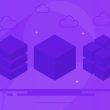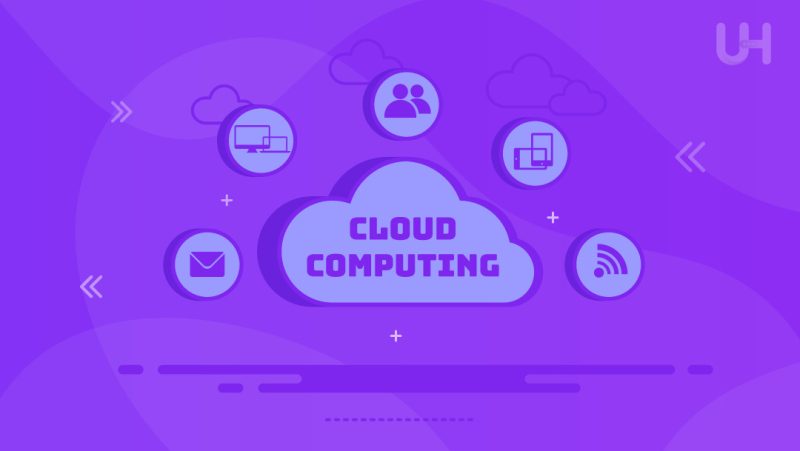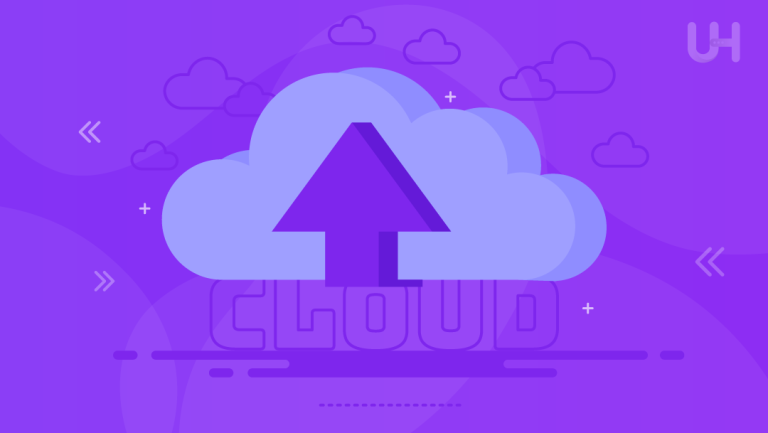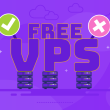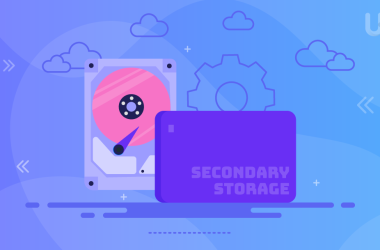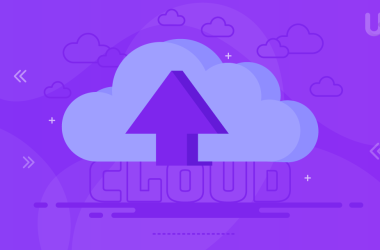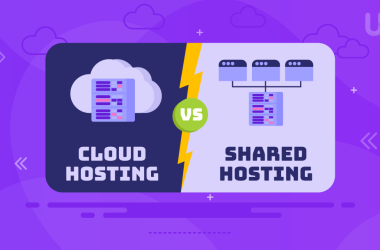The idea of cloud computing has made it possible to manage data access and applications in the modern business sector. Characterised by the use of internet-based technologies for hosting computing resources that are then rented to users, Creative Cloud offers a wide range of services such as storage, computation, and networking.
This paradigm change from on-site physical infrastructure to cloud services has enabled these trends of hyper-scalability, utility, and elasticity, as well as cost-effectiveness.
One fact that cannot be ignored is how crucial cloud computing is in the current technological world. The future of cloud computing is defined by numerous change processes and advancements, most of which are interrelated with DevOps.
As organisations look into improving how their IT functions and delivering applications, then it is important that cloud computing and DevOps principles are taken on board. Additionally, leveraging nearshore software services can further enhance the development process by offering cost-effective, geographically close outsourcing options that align well with the dynamic nature of cloud computing.
Therefore, this article has been written to examine the trends in cloud computing, innovative approaches that are expected to define the future of the technology and the importance of the DevOps course.
Definition of Cloud Computing
Cloud computing can be defined as the process of computing that involves providing various services that include computing resources utilizing the Internet through rent payment per the units used. It differs from a traditional computer in the sense that traditional computers use local servers or personal computers to run and store data.
Cloud computing utilizes servers that are situated in the cloud; a term used to refer to the Internet.
Key Characteristics of Cloud Computing
- On-Demand Self-Service: Service providers can set up users’ permission to access services such as server time and network storage automatically without the given users’ interaction with each service provider.
- Broad Network Access: Remote services can be accessed over an Internet connection using common interfaces, encouraging services to be used by multiple devices ranging from mobile phones and tablets to laptops and workstations.
- Resource Pooling: A cloud computing provider operates using three specific principles; It shares its computing resources to allow large numbers of consumers to share the same physical and virtual resources; It uses a multitenant model and dynamically allocates resources based on demand.
- Rapid Elasticity: Capabilities can be elastically provisioned and released automatically at any time in any computing resource cloud to scale up or down according to demand. From the perspective of the consumer, capabilities that can be provisioned seem limitless and can be drawn on in quantity and time desired by them.
- Measured Service: Cloud systems self-monitor their use and performance while provisioning and reallocation of resources is done based on a metering function appropriate to the nature of the service (e.g., storage, processing, bandwidth). That is control and accounting on the use of resources can be carried out and reported thus giving a clear picture of the intended provider and consumer of the resources used.
Deployment Models in Cloud Computing
- Public Cloud: This is a service that is provided across the internet and used by multiple organizations. Public clouds are to a greater extent cost-effective but offer lesser control of the data security.
- Private Cloud: Programs are kept on an intranet and are only accessible by one business entity thereby securing the development. Private clouds are useful for companies that need critical data and applications.
- Hybrid Cloud: Cloud computing model that merges public and private clouds with a sharing of information and applications within each type of cloud. A hybrid cloud allows an exchange of data and applications between private and public clouds offering additional deployment choices.
Current State of Cloud Computing
The use of cloud computing as we know it today has greatly evolved in the last 10 years and is currently one of the critical components in the IT systems of businesses of different industries.
Cloud computing is today a very lucrative business field with more advantages such as; wider reach in the network, the superior quality of service, and higher competitive intensity among the leading service players.
Current Cloud Computing Technology and Services
Infrastructure as a Service (IaaS)
- IaaS is a type of cloud computing that offers essential computing infrastructure and services, such as storage and networking, over the Internet. Customers can lease virtual servers, disks, and networks that allow them to run any software, including operating systems and other applications.
- IaaS offers an on-demand virtualized environment and computing capabilities over the Internet. Clients can acquire pure infrastructure virtual machines, storage, and networks to host any piece of software, such as OS and apps.
- Some major advantages include – elasticity, service portability, and high-cost efficiency – as a user pays only for the services used.
- Major providers: Some of the key available public cloud computing service platforms include the AWS EC2, the Microsoft Azure Virtual Machines, and Google Compute Engine.
Platform as a Service (PaaS)
- The PaaS system aims at allowing clients and customers to build, manage, and run applications on the system without requiring the setting up of an infrastructure.
- It offers resources and open source APIs (Application Programming Interface) including runtime environments and development frameworks used in the application development.
- Major providers: Google App Engine, AWS Elastic Beanstalk, Microsoft Azure App Service, etc.
Software as a Service (SaaS)
- The SaaS model is where software applications are delivered through the internet over a subscription basis. This is an online mechanism that enables people to access software applications through the internet.
- This model saves installation costs, as well as maintenance and management of the software in an individual device.
- Major providers: Salesforce, Office 365 from the Microsoft suite or Google Workspace.
Top Cloud Service Providers in the Market
Amazon Web Services (AWS)
Amazon Web Service is the largest and broadest with over 200 advanced AWS IoT services across 77 availability zones in 24 geographical regions.
- AWS is highly reliable, scalable, and comprehensive with its computing, storage, databases, ML/AI, analytics, and deployment service offerings.
Microsoft Azure
Azure DevOps currently offers several services in the fields of computation, analysis, storage, and networking.
- It runs on Microsoft’s Operating System and is therefore a convenient choice for enterprises already using Microsoft products.
Google Cloud Platform (GCP)
GCP is a cloud-based service that Google offers on the cloud computing platform that supports several applications that Google offers to its customers like Google search engine and YouTube.
- It is famous due to its capability of handling a large amount of data and conducting detailed artificial intelligence computation
Other Notable Providers
Similarly, notable competitors in the cloud computing industry include IBM Cloud, Oracle Cloud, Alibaba Cloud, SAP Cloud, and the like which provide different cloud solutions for different business segments.
Adoption Rates Across Different Sectors
- Retail: Retailers are relying on the use of cloud computing to deliver bespoke customer services, real-time stock management, and other complex analyses to increase sales and customer engagement.
- Healthcare: Cloud solutions in the healthcare sector incorporate EHRs, telemedicine tools, storage, and other data processing for the benefit of both patients and employees.
- Finance: Cloud Computing Providers financial institutions use cloud computing to enhance data security and scalability for risk analytics and regulatory compliance as well as mobile banking.
- Manufacturing: Another challenging issue where cloud computing comes in for manufacturers is supply chain management, predictive maintenance, and the use of the Internet of Things in smart factories.
- Education: Cloud services are applied in education about virtual classrooms, remote learning, and even administrative tools.
Adoption and Growth Statistics
Size and Growth
- The global cloud computing market still presents significant growth opportunities for the two companies as more industries embrace it and technological innovations occur.
- The cloud computing market is expected to grow from $302. 4 billion in 2020 to $1,008. 2 billion in 2028 at a CAGR of 14. 7% in 2021-2028.
Enterprise Adoption
- Most organizations today have embraced cloud computing, each to varying degrees. The most common approach is the combination of different services such as IaaS and PaaS in addition to SaaS.
- The adoption of hybrid and multi-cloud strategies in the industry is on the rise as organizations demand balanced high-performance systems.
Innovations and Investments
- Recurring advancements in the fields of cloud computing including AI, ML, and Edge Computing technologies continue fuelling the investment and adoption.
- Businesses are spending more money on services that protect their information and make it consistent with regulations.
Future of Cloud Computing – Trends and Innovations
There are numerous issues influencing continual and progressive changes in the field of cloud computing, and technological development is among them along with the changes in the amount and type of demands stimulated by organizations.
Here are some of the most significant emerging trends shaping the future of cloud computing:
Multi-Cloud and Hybrid Cloud
Benefits and Challenges
Multi-cloud solutions are the processes of utilizing multiple cloud solutions from different service providers to mitigate risks of lock-in of one provider, gain additional resource availability, and harness the best performance.
They take the best and risk-free characteristics of both private and public clouds to ensure that a business can store its sensitive data in a private cloud, while at the same time harnessing the expansive capabilities of the public cloud.
DevOps Integration
A DevOps course can equip professionals with the skills needed to manage multi-cloud and hybrid environments effectively As organizations strive to improve their IT departments and deliver applications faster, then implementing cloud computing and DevOps methodologies are vital.
Tools like Kubernetes and Terraform are essential for automating infrastructure provisioning and ensuring consistency across different cloud environments.
Case Studies of Successful Implementations
General Electric and BMW are among the corporations that have effectively adopted hybrid cloud models as a way of gaining enhanced flexibility, lowering costs, and promoting innovation.
Edge Computing
Definition and Significance
Edge computing is a concept that has to do with conducting processing near the source, rather than in central data cores. Latency and bandwidth usage are two of the main downsides of using P2P systems and this helps in minimizing them.
There is virtually no limit on the types of networks that can benefit from lwIP, especially for real-time processing required in IoT gadgets, automobile control systems, and industrial uses.
Integration with Cloud Computing
Edge computing is incorporated with cloud computing, as it entails handling several computational tasks locally to lighten the load of central cloud servers; it is best suited for applications that require fast processing and minimal latency. Some of the solutions include Microsoft Azure’s IoT Edge and Amazon AWS Greengrass.
Serverless Computing
Concept and Benefits
Serverless computing is a method of executing code in a computing service that automatically manages the allocation of computing resources through an underlying cloud provider without the need for direct server provisioning for developers. Here, the cloud provider automatically scales to adjust to the intensity of usage in the application.
Benefits include reduced operational complexity, cost savings (pay-per-use pricing), and faster time-to-market for applications.
DevOps and Serverless
The DevOps online training teaches professionals ways of implementing serverless computing in systems. This means automating the process of deploying serverless functions to systems and setting the discovery and diagnostics to track the performance of the applications and analyze possible errors.
AWS Lambda, Azure Functions, and Google Cloud Functions are among the significant parts of applying the serverless process that helps in the fast creation and runtimes of microservices.
AI and Machine Learning in the Cloud
AI and ML Services Provided by Cloud Platforms
The commonly used cloud service providers for AI and ML include Amazon Web Services AWS Sage Maker, Google’s AI Platform, and Microsoft’s Azure Machine Learning to name but a few since there are quite many in the market today. To deepen the understanding of AWS services, SAA-C03 Exam Dumps can come in handy. These can help build the foundational knowledge required to design and manage cloud-based AI and ML solutions.
Impact on Business Operations and Decision-Making
AI and ML help in the outcomes of data analysis, apply automation to manipulate data and help in getting predictive insights for better decision-making in areas like customer care services, supply chain logistics, and customized marketing strategy.
DevOps for AI and ML
It is noteworthy that taking a DevOps course might help better understand how the MLOps concept, which is the application of DevOps principles to the machine learning models’ life cycle, is implemented. This includes permanent solutions for data pipeline automation, model training automation, and model deployment automation.
Quantum Computing in the Cloud
Overview of Quantum Computing
Quantum computing involves computational processes based on the laws of quantum mechanics and operates at a far superior speed to achieve computations that are beyond the horizons of computational capabilities of classical computers today.
Potential Applications and Future Implications
IBM quantum computing and Google AI quantum are cloud-based quantum computing services that allow the use of quantum processors by researchers and developers.
Some of its potential uses include cryptography, the use of algorithms to protect information, solving optimization problems, drug discovery, and higher levels of specialized artificial intelligence.
Cloud Security Enhancements
Advances in Cloud Security Technologies
There are significant improvements in encryption, IAM, and threat detection that are constantly improving cloud security. AWS GuardDuty, Azure Security Center, and Google Cloud Security Command Center are some of the leading examples.
Regulatory Compliance and Data Privacy
As laws like the General Data Protection Regulation and the California Consumer Privacy Act apply increased pressure, the major cloud players are improving and adding compliance tools to ensure that companies can meet regulatory requirements and safeguard data.
There are various innovations such as automated compliance checks, data residency solutions, and also advanced audits.
Containerization and Kubernetes
Benefits of Containerization
Containers encapsulate an application and all its dependencies so it can run in a specific way irrespective of the host environment. Advantages include its flexibility in deployment, expansibility, and utilization of resources.
Role of Kubernetes in Managing Containerized Applications
Kubernetes is a cloud-native technology for developing, deploying, and managing containerized applications. It is currently the dominant CN framework and is used across various sectors and industries.
Internet of Things (IoT) and Cloud Computing
Cloud storage offers a reliable and expandable means of storing and analyzing large amounts of data produced by IoT devices. AWS IoT Core, Azure IoT Hub, and Google Cloud IoT are some of the cloud services that provide functionalities for the management of devices, receiving and analyzing data. By incorporating AWS MQTT, businesses can further optimize IoT communication by enabling real-time data transfer and enhancing the efficiency of device management and data analysis in cloud environments
Future Possibilities and Applications
IoT and cloud computing enable smart cities, connected healthcare, industrial automation, and smart homes, driving innovation and efficiency across various sectors.
Conclusion
These trends are factors that define the evolution of cloud computing, pushing growth in technology and bringing changes to enterprises.
Enrolling in a DevOps course online or a DevOps course can provide professionals with the skills and knowledge needed to navigate this dynamic field and leverage the full potential of cloud computing.
Seamless integration and reliable support are paramount in cloud computing. UltaHost offers top-tier Cloud Storage VPS solutions, ensuring your data remains secure and accessible across all platforms. Elevate your cloud computing experience today!



